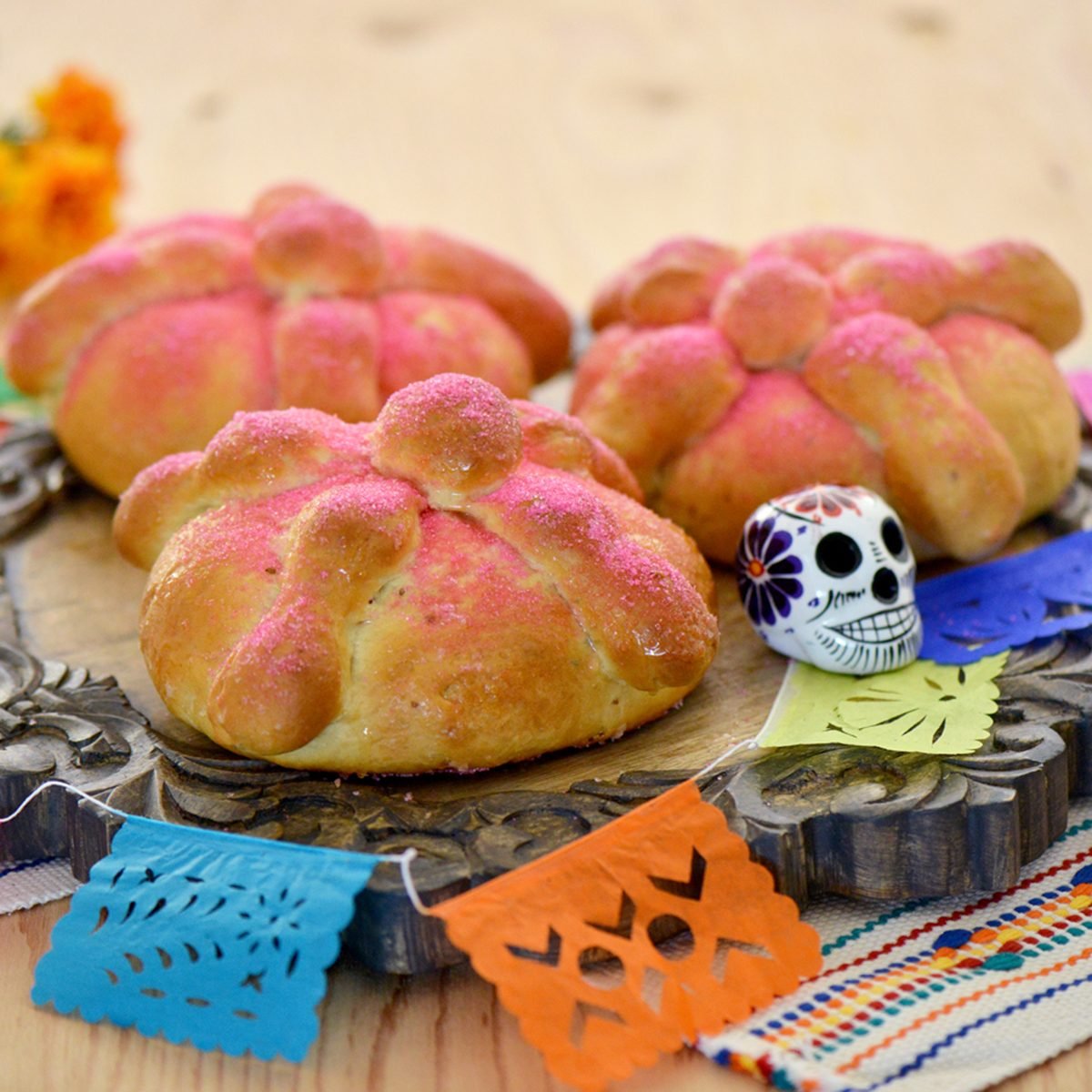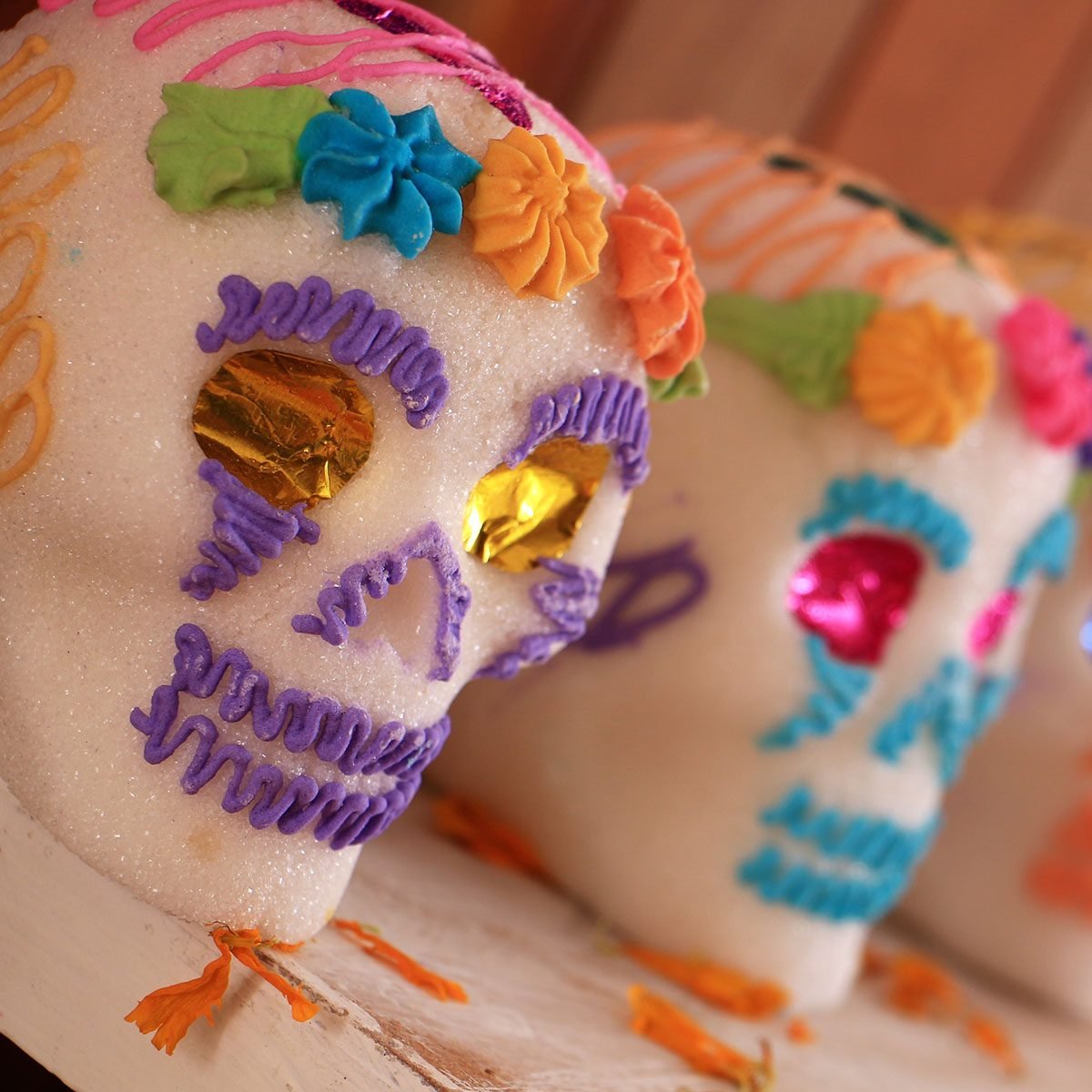Dia de Muertos food, an integral part of the Mexican celebration honoring departed loved ones, offers a tantalizing glimpse into the country’s rich culinary heritage and cultural beliefs.
From traditional dishes steeped in symbolism to modern interpretations that blend tradition with contemporary flavors, Dia de Muertos cuisine is a testament to the enduring power of food to connect us with our past, present, and future.
Dia de Muertos Food
Traditions and Symbolism
Food offerings hold great significance in Dia de Muertos celebrations, representing a bridge between the living and the departed. These offerings, known as “ofrendas,” are carefully prepared and placed on altars to honor and remember loved ones who have passed away.Specific
dishes associated with the holiday include:
-
-*Pan de Muerto
A sweet bread shaped like a skull or crossbones, symbolizing death and the cycle of life.
-*Tamales
Corn-based dough filled with meat, cheese, or vegetables, representing the sustenance and nourishment provided by the deceased.
-*Mole
A rich, flavorful sauce made from chiles, spices, and nuts, symbolizing the vibrant and complex nature of life and death.
Each ingredient and dish carries its own symbolic meaning. For example, marigolds (cempazuchitl) are believed to guide the spirits of the dead back to their homes, while candles represent light and hope in the darkness of death.
Regional Variations in Dia de Muertos Cuisine
Dia de Muertos food traditions vary significantly across Mexico, reflecting the diverse cultural and culinary heritage of each region.
These regional variations showcase the unique flavors and ingredients that shape the local cuisines, offering a glimpse into the traditions and beliefs of different communities.
Northern Mexico
Northern Mexico, including states like Chihuahua and Durango, is known for its meat-centric dishes. Roasted goat, beef, and pork are common offerings on Dia de Muertos altars, accompanied by traditional breads like pan de muerto and sweet tamales.
Central Mexico
Central Mexico, encompassing the capital and surrounding areas, is renowned for its rich and elaborate food offerings. Mole, a complex sauce made from chili peppers, spices, and chocolate, is a staple of Dia de Muertos celebrations. Tamales filled with various meats, cheeses, and vegetables are also popular.
Southern Mexico
Southern Mexico, including Oaxaca and Chiapas, features a vibrant blend of indigenous and Spanish influences. Tamales made with corn dough and filled with mole or other regional specialties are common. Traditional drinks like pozol, a fermented corn beverage, and atole, a warm corn drink, are also served.
Coastal Mexico, Dia de muertos food
Coastal regions of Mexico, such as Veracruz and Yucatán, incorporate seafood into their Dia de Muertos offerings. Fish, shrimp, and octopus are prepared in various ways, often accompanied by traditional sauces and spices. Pan de muerto is also a popular bread in these regions.
The Role of Food in Dia de Muertos Celebrations: Dia De Muertos Food
During Dia de Muertos, food plays a central role in honoring and remembering loved ones who have passed away. The preparation and sharing of food is an integral part of the festivities, as it is believed that the spirits of the deceased return to visit their families and partake in the offerings left for them.
Food offerings, known as “ofrendas,” are carefully prepared and placed on altars or graves. These offerings typically include the deceased’s favorite foods, such as mole, tamales, pan de muerto (sweet bread), and fruit. The belief is that the spirits of the deceased can enjoy the flavors and aromas of the food, and that the offerings provide sustenance for their journey back to the spirit world.
Sharing Food with Family and Friends
In addition to preparing food offerings for the deceased, Dia de Muertos is also a time for families and friends to gather and share meals together. This is an opportunity to bond, remember loved ones, and celebrate the continuation of life.
Food becomes a symbol of unity and connection, as it brings people together to share stories, laughter, and memories.
Emotional Significance of Food
The food prepared for Dia de Muertos often carries deep emotional significance. For many families, certain dishes are associated with specific memories or loved ones. The act of preparing and sharing these dishes can evoke powerful emotions and create a sense of connection with the past.
For example, one family may have a tradition of making their grandmother’s favorite tamales every year. As they prepare the tamales, they share stories about her and remember her fondly. The taste of the tamales becomes a reminder of her love and the joy she brought to their lives.
Modern Interpretations of Dia de Muertos Food

In recent years, chefs and restaurants have begun to experiment with modern interpretations of traditional Dia de Muertos dishes. They are incorporating new flavors and techniques into the holiday cuisine, creating innovative dishes that blend tradition with contemporary culinary trends.
Molecular Gastronomy
One of the most popular modern interpretations of Dia de Muertos food is molecular gastronomy. This culinary technique uses scientific principles to create dishes that are both visually stunning and delicious. Molecular gastronomy chefs use a variety of techniques to create their dishes, including spherification, emulsification, and foams.
For example, they might create a spherified version of the traditional mole sauce, or an emulsified version of the traditional tamales.
Fusion Cuisine
Another popular modern interpretation of Dia de Muertos food is fusion cuisine. This culinary style combines elements from two or more different cultures to create new and exciting dishes. For example, a chef might create a fusion dish that combines traditional Mexican flavors with modern French techniques.
Deconstructed Dishes
Deconstructed dishes are another popular modern interpretation of Dia de Muertos food. These dishes take traditional dishes and break them down into their individual components, which are then arranged on a plate in a new and creative way. For example, a chef might create a deconstructed version of the traditional pan de muerto, with the bread, sugar, and anise seeds served separately.
Dia de Muertos Food: A Culinary Journey
Embark on a culinary adventure through the vibrant and diverse Dia de Muertos food traditions. From savory dishes to sweet treats, each region of Mexico boasts unique flavors and symbolism that honor the departed.
Interactive Table of Dia de Muertos Food
Explore the interactive table below to discover the richness of Dia de Muertos cuisine. Each dish is presented with its ingredients, symbolism, and regional variations, providing a comprehensive insight into this culinary celebration.
| Dish | Ingredients | Symbolism | Regional Variations |
|---|---|---|---|
| Pan de Muerto | Flour, sugar, yeast, water, orange zest, anise | Represents the bones of the deceased | Varies in shape and decoration across regions |
| Tamales | Masa, fillings (meat, cheese, vegetables), corn husks | Offerings to the dead, symbolize life and fertility | Numerous fillings and wrapping styles depending on the region |
| Mole Poblano | Chocolate, chili peppers, spices, chicken or turkey | Represents the fusion of indigenous and Spanish cultures | Originates from Puebla, but has variations throughout Mexico |
| Calabaza en Tacha | Pumpkin, piloncillo (unrefined cane sugar), cinnamon | Symbolizes the harvest and abundance | Popular in central and southern Mexico |
| Sugar Skulls | Sugar, water, corn syrup, food coloring | Represent the deceased and are often personalized with names | Vary in size, shape, and decoration |
Dia de Muertos Food: A Visual Feast

Dia de Muertos is a vibrant celebration that honors the memory of deceased loved ones. Food plays a significant role in these celebrations, and the dishes prepared are not only delicious but also visually stunning.
Sugar Skulls (Calaveras de Azúcar)
Sugar skulls are one of the most iconic symbols of Dia de Muertos. They are made from sugar, water, and egg whites, and are often decorated with colorful icing and edible glitter. Sugar skulls represent the departed and are often inscribed with their names or nicknames.
Pan de Muerto
Pan de muerto is a sweet bread that is traditionally eaten during Dia de Muertos. It is made from a mixture of flour, sugar, eggs, and butter, and is often shaped into round loaves or figures representing the deceased. Pan de muerto is typically decorated with sesame seeds or sugar crystals.
Tamales
Tamales are a type of cornmeal dough that is filled with various ingredients, such as meat, cheese, or vegetables. They are wrapped in corn husks and steamed until cooked. Tamales are a popular dish during Dia de Muertos and are often served with mole sauce.
Atole
Atole is a warm, thick beverage made from cornmeal, water, and sugar. It is often flavored with cinnamon, vanilla, or chocolate. Atole is a traditional drink during Dia de Muertos and is often served with tamales or pan de muerto.
Common Queries
What is the significance of food offerings on Dia de Muertos?
Food offerings on Dia de Muertos are believed to nourish and honor the spirits of deceased loved ones, providing them with sustenance and comfort during their journey back to the living world.
What are some traditional Dia de Muertos dishes?
Traditional Dia de Muertos dishes include pan de muerto (sweet bread shaped like skulls), tamales, mole, and atole (a warm corn-based drink).
How does regional cuisine reflect local cultures and traditions?
Regional variations in Dia de Muertos cuisine reflect the diverse cultures and traditions of Mexico’s different regions, with each dish showcasing unique flavors, ingredients, and cooking techniques.

